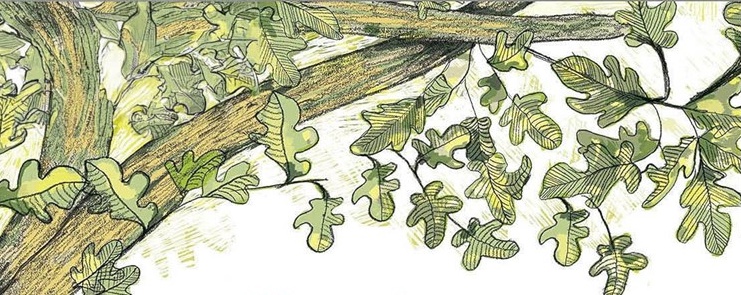
I arrogantly recommend… is a monthly column of unusual, overlooked, ephemeral, small press, comics, and books in translation reviews by our friend, bibliophile, and retired ceiling tile inspector Tom Bowden, who tells us, “This platform allows me to exponentially increase the number of people reached who have no use for such things.”
Links are provided to our Bookshop.org affiliate page, our Backroom gallery page, or the book’s publisher. Bookshop.org is an alternative to Amazon that benefits indie bookstores nationwide. If you notice titles unavailable online, please call and we’ll try to help. Read more arrogantly recommended reviews at: i arrogantly recommend…
 The Running Flame
The Running Flame
Fang Fang / Michael Berry
Columbia University Press
Taking place in the 1990s, after China’s turn to capitalism was in full swing—and along with it the reemergence of brutal patriarchy, which had been simmering in the background during the all-too-brief flirtation with the feminism encapsulated by Mao’s adage, “Women hold up half the sky”—The Running Flame novelizes the fates of too many women living in China’s countryside (and the city, too). Under traditional, Confucian patriarchy, daughters-in-law are expected to wait on their in-laws hand and foot, as well as the son she married, raise and tend to their children, keep the house tidy, the meals ready, the animals fed, their pens cleaned, and the vegetable garden hoed and weeded. Once a woman leaves her parent’s home to enter her husband’s home, her parents regard her as water thrown out the window. She becomes, quite literally, her husband’s and in-laws’ property to do with as they see fit. Even today in China, domestic abuse is no guarantee that a divorce will be granted—it depends on whether the husband agrees to it. Same with male but not female infidelity.
But during China’s one-child policy, daughters could now receive a college education instead of the son who was never born. How are ya gonna keep on the farm once they’ve seen Paree?
The Running Flame concerns the fate of a young woman named Yingzhi, who is in prison when we first meet her, awaiting her execution for the murder of her husband. (A note on capital punishment in China: The average amount of time between being charged with a capital crime and being executed for that crime is about one month: no time for extenuating circumstances, recanted testimony, exculpating DNA evidence, and so forth to wend its way through the court system to overturn a decision. In the novel, Yingzhi learns that the last woman to have the cell she now occupies was there five months.) How did she get there?
Yingzhi’s story begins with her high school graduation. She did well in school, was studious, got good grades, and understood the material well enough to tutor her friends who didn’t understand it. Still, she’s not interested in going to college, nor is she interested in hard labor—about the only type of work available in rural China. A friend of her family’s, who runs a successful band that plays at weddings and funerals, asks Yingzhi if she would like to sing in his band—she’s pretty and has a good voice. She agrees, is immediately popular, and quickly realizes that just from singing and dancing a couple of times a week, she could make up to the U.S. equivalent of about $50 a month, with another $6 or $7 a month for her parents. This is the countryside version of bright-lights-big-city income.
Early in her new success, she meets a young man named Guiqing, who compliments her on her beauty and singing. They begin a courtship that quickly results in Yingzhi’s pregnancy and an early marriage. For her marriage gift, she wants from Guiqing a house with indoor plumbing. He demurs by saying the money would be better spent on raising their soon-to-be-born son. She agrees to it, not realizing until after the marriage that because their son obtained Yingzhi so cheaply, she must not be worth very much as a person. And so, the antagonisms with her in-laws begins, including their insistence on naming the baby the English equivalent of “trash,” assuming that it will inspire him to rise above his name, at which point they can re-named him. That’s something they did with Guiqing—the son who can do no wrong, just as much as he will do no labor but instead spends his time drinking, gambling, and whoring. Money is a matter for Yingzhi to make.
Since it is up to Yingzhi to make money, she uses this as leverage to get permission to sing in the band again. Her hope is that within two years, she will have saved 2,000 yuan ($275), enough to build a house. However, Guiqing takes the money to pay off his gambling debts and his parents continue to shame her for daring to ask that he work. Soon, too, the beatings start, as does Yingzhi’s infidelity. Once her infidelity is discovered, Guiqing’s parents demand her death.
Fang Fang’s The Running Flame is a stark but honest assessment of the lives lead by too many women still in China, whether they live in the country or the city. Yingzhi’s desires for herself are astonishingly modest by urban standards: Just a small place to live, with electricity, indoor plumbing, and a washing machine. And the freedom to leave whenever she wants.
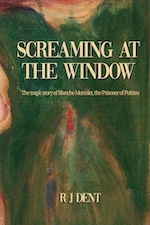 Screaming at the Window: The tragic story of Blanche Monnier, the Prisoner of Poitiers
Screaming at the Window: The tragic story of Blanche Monnier, the Prisoner of Poitiers
R. J. Dent
Kernpunkt Press
In late 19th century Poitiers, France, lived an upper-middle class family, the Monniers. The father, Émile Monnier, was a successful professor of literature at a nearby university. His wife, Louise, claimed to have royalty as distant relatives, and conducted her expectations of her children accordingly. The eldest, Marcel, was a pedantic and spineless dweeb whose first job out of law school was given to him as a favor to his father. He never rose in rank. His younger sister, Blanche, was vivacious, strong-willed, and musically talented in youth. But all of that went south in her early twenties, when Blanche’s mother discovered she was in love with a lawyer whose station in life and long-term prospects were not to Louise’s liking.
Initially, Blanche was pulled out of school and confined to her bedroom on the second floor of the house. However, the Monnier’s maids noticed that Blanche had taken up the practice of dropping out her window a note in an envelope, which her suitor would open and read while Blanche stood in front of her window, stripped off her clothes, and gyrated. As a result, the windows were shuttered, and the shutters padlocked from the outdoors. This measure did not succeed into transforming Blanche into the docile creature Louise hoped for.
Thus, Madame Monnier convinced the family doctor that Blanche needed help for her erratic behavior. He prescribed a daily dose of potassium bromide, which impairs memory formation and—long-term (exactly what Madame Mollier wanted for Blanche)—leads to “confusion, semi-coma, anxiety attacks, neurosis, and paranoia,” as well as “depression, lethargy, somnolence . . ., loss of reflexes . . . delirium . . . abnormal speech,” and so forth. This fact alone seems to be author R. J. Dent’s major discovery in the criminal case, which arose, in large part, from the side effects on Blanche Monnier of twenty-five years of daily potassium bromide ingestion.
Blanche’s behavior became erratic, veering from violent to withdrawn. Eventually, the potassium bromide made her incontinent, and her mattress was allowed to rot (on Louise’s orders), sheets removed of feces but not washed. There was no light in her room. By the time she was found, her weight was down to 51 lbs.
Over the years, neighbors heard screams from Blanche’s room. A couple of attempts were made to investigate the complaints, but the authorities were violently repelled by Madame Monnier and did not follow up. Because of the stench from Blanche’s darkened room, where the door was always closed, upon Madame Monnier’s direction, keeping maids became increasingly difficult, especially after the longest-serving maid died. Madame Monnier had succeeded in keeping her in service by keeping her in drink. During these years, too, Blanche’s brother, Marcel, came to visit, almost every day, sometimes several times a day. Although he suggested to his mother that Blanche might be better taken care of in a nursing home, his mother would absolutely have none of that. Marcel was reluctant to argue with his mother: She had already legally maneuvered him out of what he should have been paid from his father’s will, why make matters worse?
Time catches up with Louise Monnier, as it always does: And, as the elderly do, she sickens, strangers come in the house, unpleasant discoveries are made, as are arrests—Louise and Marcel Monnier—and a skin-on-bone Blanche is transported to a hospital. Public outrage follows. Louise dies on her sickbed in jail. Her son, Marcel, is tried for the violence done to his sister, and is found guilty.
However, the appeals court recognized a distinction in the law between acts of commission and acts of omission. Marcel was morally guilty of acts of omission but innocent of crimes of commission. The law—the letter of the French law at the time—explicitly stated that acts of commission were punishable but was silent on matter of omission. The prosecution in the criminal court had argued, by analogy, that the results from acts of omission could be just as reprehensible as those results from acts of commission. But the appeals court acted more conservatively in its decision than did the criminal court, which had sentenced Marcel Monnier to 15 months in prison.
Marcel’s public reputation was ruined, and he and his wife retired to the French countryside. The court awarded him his mother’s trove of hoarded cash and her estate (together worth about $15 million today). Blanche was eventually moved to a psychiatric hospital, paid for by money from her mother’s estate. She never recovered her intellectual functions after so many years of being sedated, remaining at the mental level of about a three-year-old, and withdrew into herself once in the hospital, where she lived another eleven years, dying at age 63, just four months after her brother.
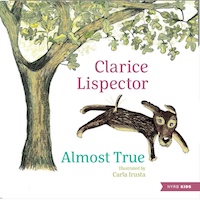 Almost True
Almost True
Clarice Lispector / Benjamin Moser, story; Carla Irusta, illustrations
The Mystery of the Thinking Rabbit
Clarice Lispector / Benjamin Moser, story; Kammal João, illustrations
NYRB Kids
In her children’s stories, as her works for adults, Clarice Lispector’s narrators in Almost True and The Mystery of the Thinking Rabbit adopt a just-so tone, a shrugged “it’s just how they are,” but for children the tone is presented as wryly ironic. Both books feature characters—a rabbit in one, a dog in the other—that find themselves with the unusual ability to think—a quality unexpected of them by others, and so a field of personal development often left fallow, but our heroes discover that ideas can come in handy for solving problems and making oneself happy.
Originally written for her sons (and marketed for children ages 5 to 9) both Almost and Rabbit are structured for give-and-take between storyteller and audience (i.e., kids), from audience participation to addressing its ability to suspend its disbelief at what they are told is true, or almost true, nicely rendered by Lispector’s biographer and long-time translator Benjamin Moser.
From Almost True’s introduction to two key players in the story: “The rooster’s name was Evidio. The ‘E’ came from egg, the ‘vidio’ was just because he felt like it. The hen was named Edissea. The ‘E’ was because of egg and the ‘dissea’ was just because she felt like it.” But this turns out to be the general naming practice of the fowl in the community. The story also has a lot of throat-clearing (in the form of an overlong introduction) from its narrator, a household dog named Ulisses, whose incessant barking has been faithfully transcribed by Clarice into the story we are about to read—it’s not until a quarter through the book that the story proper begins, but not without a final sputter: “At this point, you must be complaining and asking: Where’s the story? Bear with me, the story’s going to storify. And right this second. This is how it starts…”
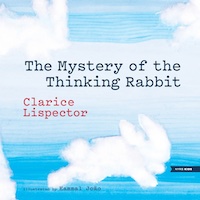 The rabbit is kept in a cage by a family in their house. Because the family sometimes forgot to feed him, he discovers—through the power of thinking—of a way to escape, so he can go outside and find something to eat. Quickly found and returned, the rabbit is now well and consistently fed. However, he misses the outdoors and makes escaping part of his routine. The family wants to solve the mystery of how he keeps escaping. Lispector makes clear to children that there are limits to what one may demand of an author.
The rabbit is kept in a cage by a family in their house. Because the family sometimes forgot to feed him, he discovers—through the power of thinking—of a way to escape, so he can go outside and find something to eat. Quickly found and returned, the rabbit is now well and consistently fed. However, he misses the outdoors and makes escaping part of his routine. The family wants to solve the mystery of how he keeps escaping. Lispector makes clear to children that there are limits to what one may demand of an author.
Don’t expect traditional narrative arcs to these stories: Just as a particular problem faced by the protagonist is solved (or seems resolved), the story meanders to another issue. Or, in the case of The Mystery of the Thinking Rabbit, the mystery remains a mystery. It’s the other facets to the rabbit’s life that make its winding story interesting. Carla Irusta and Kammal João, both Brazilian illustrators, offer their colorful interpretations of Lispector’s whimsical prose, succeeding, too, in conveying the childlike nature of the stories’ inventiveness and their disregard for verisimilitude.
 The River
The River
Laura Vinogradova / Kaija Straumanis
Open Letter
A short, affecting novel about coming to terms with loss and the ability to trust and love. Two girls, Dina and Rute, are raised by a dissolute mother who goes from man to man, their father a specter from the past their mother only complains about and they never see. As adults, in their late 20s, Dina suddenly disappears. Only the readers know she has been abducted, presumably to be gang raped and murdered. Ten years on, Rute discovers that her biological father has died and that she has inherited his house in the countryside.
Without saying a word to her husband, Stefans, she decides to visit her father’s house and spend the summer there. She’s closed in on herself, initially speaks almost not at all to anybody, and writes letters every day to the disappeared Dina, providing readers with an emotional weather report of her inner life. Nearby live an adult brother and sister. As with Dina and Rute, the brother’s and sister’s parents wanted nothing to do with them, but the brother, Kristofs, bonds with J?les, Dina and Rute’s father. Rute discovers that her father has a local reputation as a kind person, a good Samaritan who took or aided any and all in need. Because of this history, Kristofs and his sister, Matilde, already feel a welcoming compassion for Rute when she arrives. Rute reluctantly accepts their acts of kindness, benevolent behavior that begins to draw Rute out from her ten-year immersion into morbid uncertainty, exacerbated by her estranged mother’s imprisonment for murdering, in her own self-defense, the man she was living with at the time.
With delicacy, Latvian author Laura Vinogradova shows, in Kaija Straumanis’s fine translation, how Rute slowly pieces together again—or perhaps for the first time—her sense of self, her sense of herself as somebody who matters to and affects the lives of others, the sense that her re-emergence will be painful, good, and necessary.
 Berlin
Berlin
Andris Kuprišs / Ian Gwin
Open Letter
A collection of short stories from the Latvian writer Andris Kuprišs, translated into smoothly idiomatic English by Ian Gwin. Berlin’s stories involve protagonists in situations of charged but unresolved emotions between parent and child, student and teacher, mutual strangers, and lovers.
Melancholy underpins these stories, as does ambiguity of motivation. A man wakes up in a hospital, in a ward for patients with psychological problems. (A schizophrenic with a Jesus complex is in the bed next to his.) He is told only that he drank too much and that he needs a few days to recover. Was this a botched suicide attempt? Was it carelessness? Uncertainty and indecision haunt many of Berlin’s stories. A similar situation is before the protagonist of another story:
What had happened? I wanted to know. I don’t like the feeling of not knowing what happened. I like to know that I can influence a situation, that my actions have some sway. I feel safer when I do, though I don’t really think of myself as cowardly. I’m not afraid of the dark at all. I’m also not afraid of spiders. Or God. But the unknown, I am afraid of that. I like having options. I like to have an escape.
But options and escape plans are qualities Berlin’s protagonists usually lack. The title story, making up more than the last third of the book, combines the faulty characteristics of the other protagonists and manages to transcend them. Something hopeful arises from the anomie.
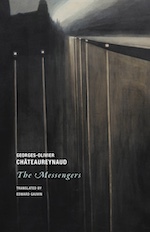 The Messengers
The Messengers
Georges-Olivier Châteaureynaud / Edward Guavin
Wakefield Press
An unnamed lad walks into a rural village as night falls (“not … from above so much as seep from the trees and thin in the air like a cloud of ink in a glass of water”), where he meets a young woman, hunchbacked with one bad eye, who tells the young man to follow her but keep silent. They come to a clearing by a farmhouse where a party with food and music is underway. The woman takes the lad to an outbuilding where she lives and tells him to stay there: she will return with food and drink, but he must remain hidden: The revelers outside aren’t always welcoming to strangers.
He does as she says, looking out a top window onto the festivities. The young woman returns with food and drink and offers to share her bed and body with the boy, a virgin uninterested in fornicating with a hunchback. He leaves her and wanders around the village, creeping into houses to look around in the dark. Everyone seems asleep, passed out drunk. In one of the houses, he follows a woman to her bedroom and enters the room.
Once the woman begins screaming, the boy runs from the small town with its villagers in pursuit. After a few hours of chase into the dawn, he collapses, eventually waking midday to find himself in a field, watched by an old woman who at first thinks he’s just sleeping off a drinking jag and leads him to a well where he can clean himself and freshen up. Once she recognizes the kerchief the boy uses to wipe blood from his wounds as belonging to the lady of the house he escaped from, she and the boy get into an altercation. He throws the woman into the well, headfirst and continues his journey. Hours later, he meets a man on a wagon, who tells the boy to join him, that he’s on his way to deliver a message where he and the boy will be fed.
At the house—a mansion—the man (also nameless) introduces the boy as his “honorable aide,” and feasting commences, with a large party already going on. During the party, the boy meets a girl, who encourages him to follow her downstairs—a long decent down to a series of dimly lit cages where prisoners and feral animals are kept. The girl wants to play a prank on a friend of hers, which goes badly for both girls, and the boy runs back upstairs, certain that the girl’s father will have him beaten and imprisoned.
Back upstairs, the boy rejoins the messenger. The messenger has no idea what his message is about or who is recipient is supposed to be. He knows only that he has been set on this single task for decades. Once he feels that the person whose house he came to is no longer of use to him, he encourages the boy to help him burn down the house, locking its occupants inside.
And so the two go, man and boy, from one stop to another, receiving information about where to go next—either to finally deliver the message, let somebody know the message is on its way, or be told where to go next, then destroying what they’ve left behind. Although the dank air of mystery, unease, and decadence pervades their travels and stops, imbuing the travel with Sadean cruelty and murder, Poe’s influence on Châteaureynaud is greater here than Kafka, both writers that Châteaureynaud has been likened to. Kafka was more interested in the gnostic maze of bureaucracy and social etiquette than in gratuitous, whimsical nastiness. And The Messengers has something to it of lore or forgotten ghost stories, a living hell of a cycle passed down from one generation to another.
 The Xenotext, Books 1 & 2
The Xenotext, Books 1 & 2
Christian Bök
Coach House Press
Christian Bök is a writer and artist who enjoys working within rigid constraints, strict rules for producing texts. Artistic texts, especially poetry, have long worked within constraints. Shakespearean sonnets, for instance, consist of 14-lines divided into three four-line stanzas and a final two-line stanza, following a particular rhyme scheme (ABAB, say), written in iambic pentameter. These constraints influence such things as word choice, nuance, connotation, and so forth. It is a sign of craftsmanship mastery to construct such a poem, especially when it hides rather than calls attention to its construction. A reader’s attention is held by the semantic content of the poem, not its mechanism.
For an earlier work, Euonia (2001), Bök wrote a book with five chapters—A, E, I, O, and U—using words in each chapter that have only that vowel in them. For example, “live” wouldn’t qualify for Chapter I but “living” would. He sought to exhaust the extant vocabulary satisfying this condition, and managed to deploy 98% of it, including the goal to minimize word repetition (hard to avoid with articles and conjunctions). Bök furthermore imposed conditions that each chapter must describe a culinary banquet, debauch, pastoral tableau, and nautical voyage. And, finally, Euonia’s sentences used “accented internal rhyme through the use of syntactical parallelism.”
This effort took seven years to complete and is about 100 pages long.
With The Xenotext, Book 2, Bök now ends a 25-year project with even stricter constraints: embedding a poem in the genes of a living bacterium that, when genetically transcribed, produces a corresponding poem, both of which can be genetically replicated without error, ad infinitum: one poem each for Orpheus and Eurydice that tells and re-enacts their tale of eternal love, mourning, and death.
The Xenotext consists of a single sonnet (called ‘Orpheus’), which, when translated into a gene and then integrated into a cell, causes the cell to ‘read’ this poem, interpreting it as an instruction for building a viable, benign protein—one whose sequence of amino acids encodes yet another sonnet (called ‘Eurydice’). The cell becomes not only an archive for storing a poem, but also a machine for writing a poem. The … intended symbiote is D. radiodurans (a germ able to survive, unchanged, in even the deadliest environment). A poem stored in the genome of such a resilient bacterium might outlive every civilization, persisting on the planet until the very last dawn, when our star finally explodes.
The genetic segment comprising the poem “Orpheus” assigns “a codon of DNA to each letter of the text—for example: GTG encodes the letter A; ACC encodes the letter N; CGT encodes the letter Y, etc.”
The germ transcribes codons of DNA into correlative nucleotides for a strand of RNA, whereupon the cellular ribosome ‘reads’ this RNA, creating a protein segment, in which each of the amino acids corresponds to a letter in the poem ‘Eurydice’—for example: valine (V) encodes the letter T; threonine (T) encodes the letter H; arginine (R) encodes the letter E, etc. The protein comes tagged with an incarnadine fluorophore, called mCherry, which makes the germ fluoresce. As the cell converts the words of ‘Orpheus’ into the words of ‘Eurydice,’ the cell emits a ‘rosy glow,’ the faery in the poem itself.
Of the constraints used, adenine, for instance, the chemical structure for which is represented as C5H5N5, has as the building blocks of the poem representing it five words starting with C, five with H, and five with N:
nurturant
creatures, honeybees
nursemaid
collected
chemicals,
cocooning nectarous honeydews—heartsome
narcotics,
cunningly harvested,
numbingly hypnoidal
Each poetic type represented in the books’ various sections must conform to strict constraints in their construction. For instance, “The Nocturne of Orpheus” “is a love poem—an alexandrine sonnet in blank verse. Each line contains thirty-three letters, and together the lines form a double acrostic of the dedication; moreover, the text is a perfect anagram of the sonnet ‘When I Have Fears That I May Cease to Be’ by John Keats…”
 Book 1 looks back in time, Book 2 forward. Book 2 proposes a further, perhaps more practical potential for encoding information in bacteria: as a mode for storing and preserving cultural history, the history of a civilization, to outlast its own life. This may be of interest to a civilization, such as ours, which seems dedicated to self-annihilation.
Book 1 looks back in time, Book 2 forward. Book 2 proposes a further, perhaps more practical potential for encoding information in bacteria: as a mode for storing and preserving cultural history, the history of a civilization, to outlast its own life. This may be of interest to a civilization, such as ours, which seems dedicated to self-annihilation.
So, what about the chosen bacterium, D. radiodurans? In Book 2’s section, “The Extremophile,” we learn that D. radiodurans can withstand temperatures as hot as 423 K and as low a near absolute zero. “It derives no energy from the Sun. It feeds on asbestos. It feeds on concrete.” Also: “It breathes methane. It can withstand temperatures … hot enough to melt phosphorous.” We are told “It devours plutonium” and that it can be found in a lake with an acidity comparable to lye. It would remain unfazed by the fall of atomic bombs. Bring on your worst, Bök’s love poems will endure.
